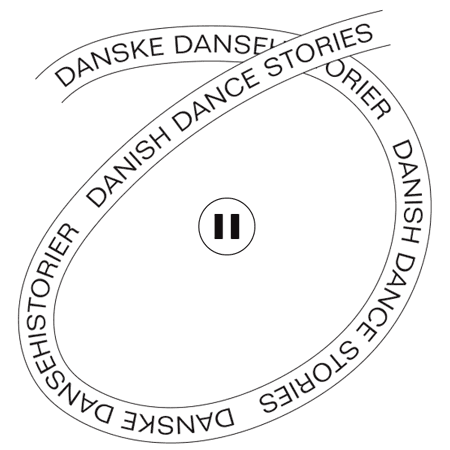WORKSHOP DESCRIPTION, DD RESIDENCY 2108
PAULA CASPÃO
‘Danish Dance (Hi)stories’ In Small Parts
Workshop på engelsk / Workshop in English
Dances. Histories.
How (in)exactly have they been put together and/or apart, by dance and history makers, in diffrent places and times?
Think by the middle:
Dance With History. Dance And History. Dance As History. Dance For History. Dance Of History. Dance Through History. Dance From History. Dance Has History. Dance After History. Dance On History. Dance Around History. Dance In spite of History. Dance Under History.
And vice versa.
The workshop runs across two parallel lines of reflection. One dedicated to exercises that will help us spot – and operatively name – the spaces that connect and/or distinguish, for each of us, dance and (hi)story (makings). Key issues here are: How do their spaces of co-existence look- and-feel like? And: can we expand our habits of (dis)assembling them?
The other line in case regards the practical notion of ‘resources’ (both in history and in dance) and leads us to the simple question: where do we pick / make our dance (hi)stories from? Or: if resources come to us, by which means and how many times? In other words: who/what makes ‘the pass’ and how, according to which rhythms? This question regards not only the very modes of existence of our ‘resources’ and their (more or less implicit) modes of sociality, but their particular (more or less mobile) geographies.
Throughout the two main-lines, a short collection of terms will be brought onto – or put under, or beside, or at – the table – or carpet, or rug, or whatever surfaces we will have at hand in the studio: beforeness / afterness / palimpsestic time / palimpsestic space / palimpsestic duration / resource / rehearsal / re- / chorography. No, there is no ‘e’ missing in ‘chor(e)ography’ here, go wikipedia:
In his text of the Geographia (second century CE), Ptolemy defined ‘geography’ as the study of the entire world, but chorography as the study of its smaller parts—provinces, regions, cities, or ports. Its goal was ‘an impression of a part, as when one makes an image of just an ear or an eye’; and it dealt with ‘the qualities rather than the quantities of the things that it sets down’. Ptolemy implied that it was a graphic technique, comprising the making of views (not simply maps), since he claimed that it required the skills of a draftsman or landscape artist, rather than the more technical skills of recording ‘proportional placements’.
Ptolemy's most recent English translators, however, render the term as ‘regional cartography’.
NOTE: The workshop requires some previous readings (sent beforehand), though non-orthodox singular reading practices are encouraged and most welcome, provided the participants will be willing to tell about them.
BIO
Transversal writer/artist and researcher, Paula works internationally, intertwining choreographic with discursive practices, and experimenting research formats that merge dissimilar kinds of knowledge (and) composition. To welcome intersections and emphasize the specific poetics and life forms implicated in any circumstances of research and/or composition, she founded T-Fi Cabinet – an exploratory field of miscegenation between artistic, geo-graphic, literary, and theoretical practices, where T-Fi stands for Theory-Fiction. She holds a PhD in Philosophy (epistemology and aesthetics) from the University of Paris-10, and is currently a visiting scholar at the New York University (Performance Studies/Tisch School of the Arts) in the frame of her postdoctoral research at the University of Lisbon (Centre for Theatre Studies and Contemporary History Institute/UNL).
LIST OF REFERENCES
Boris Charmatz's mini-lecture (10min), performed in the frame of: Storytelling in the Archives / Performance Forum / MOMA LIVE (2015)
The recording of the whole event is almost 2h long, but Charmatz's lecture is to be found between 40’50 and 51’45:
https://www.youtube.com/watch?v=eYqKSTDpjrY Rebecca Schneider, «Lithic Liveness and Agential Theatricality»
Plenary paper delivered at ASTR, American Society for Theatre Research, Nov. 22, 2014:
http://www.academia.edu/9476204/ASTR_Plenary_Paper_Lithic_Liveness_and_Agential_Theatricality._November_2014

